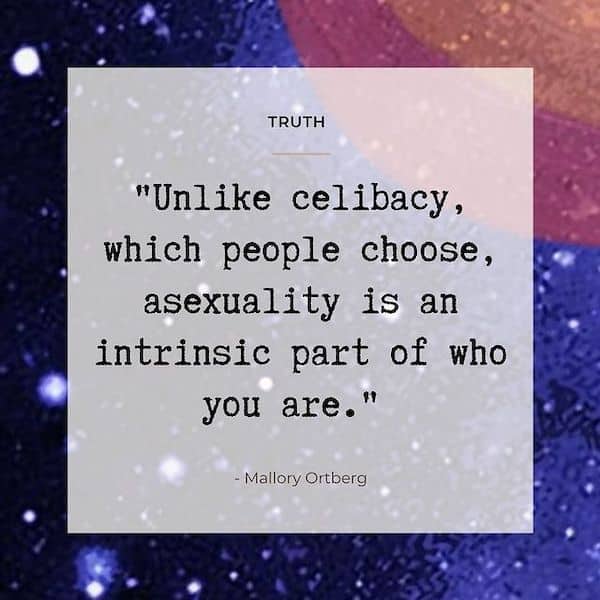
Cupiosexual is a microlabel for a certain type of sexual identity that falls on the asexual spectrum. Here, we shed light on the term “cupiosexual”, its definition, origin, and what it means to identify as such.
RELATED | What Does It Mean To Be Aroace?
Understanding The Asexual Spectrum
Cupiosexual is just one of the many microlabels that people on the asexual spectrum (also called ace-spec) can identify with. The ace-spec is a spectrum of orientations ranging from sexual to asexual, the latter of which is described as having little to no desire for or interest in sex.
Some people on the ace-spec may people feel sexual attraction or desire for another person but only under specific circumstances. For example, gray-asexual people may feel sexual attraction but have a low level of arousal or libido. Demisexual people, on the other hand, require a strong emotional bond with another person before they can feel sexually attracted to them.
Asexuality is often confused with celibacy, but it’s important to differentiate the two. Asexual people typically do not feel sexually attracted to others. If they do, it usually happens under specific circumstances or to a lesser degree than allosexual people. However, asexual people may still choose to have sex – being asexual doesn’t necessarily mean you are celibate.
Celibates, on the other hand, make a conscious choice to avoid sex. A celibate person can thus identify as either sexual or asexual.

Personal And Cultural Attitudes Towards Sex
With all that being said, asexual people can have varying personal attitudes towards sex, which can be classified into the following categories:
- Sex-favorable: This is described by the Asexual Visibility and Education Network (AVEN) as a “positive willingness” to compromise with a partner or an “openness to finding ways to enjoy sexual activity”, be it physically or emotionally. For example, some sex-favorable people may be more willing to be the giver than the receiver in a sexual situation.
- Sex-indifferent: These are people who may not find sex particularly enjoyable but may be willing to compromise on certain activities. Unlike sex-favorable people, who may enjoy sex from time to time or under certain circumstances, most sex-indifferent people do not find sex personally gratifying. However, they typically do not feel distressed by the idea of giving their partner pleasure, either.
- Sex-averse: These are people who do not enjoy sex at all and are more or less unwilling to participate in any sexual activity.
- Sex-repulsed: This describes people who are disgusted by the idea of having sex.
One’s personal attitudes towards sex may or may not reflect how they view sex on a broader, cultural/political level. These cultural beliefs are broken down into the following categories:
- Sex-positive: A healthy and positive view of sex. People who are sex-positive generally believe that everyone has the right to have as much or as little sex (consensually, of course) as they want and discourage slut-shaming. They view access to sex education and sexual health services as beneficial to society.
- Sex-neutral: Sex neutrality is the belief that sex is neither good nor bad. People who are sex-neutral are typically indifferent to the idea of having widespread sex education and health services.
- Sex-negative: This is a belief system that views sex as inherently wrong or bad. A sex-negative culture censors all kinds of sexual content in the media and attempts to keep young people from learning about sex outside of the home.

Ace-Spec Identities/Microlabels
Wondering if you might fall on the ace-spec? Here are some of the identities that belong to the ace spectrum:
Gray asexual: Also called “gray ace”, this describes people who experience sexual attraction or desire in a limited capacity. Gray ace people may not necessarily be sex-averse or sex-repulsed but rather have low libido or only experience sexual attraction in specific circumstances.
- Demisexual: These are people who can only experience sexual attraction to someone after forming a strong emotional bond with them.
- Aceflux: These are people whose sexual attraction fluctuates over time.
- Reciprosexual: These are people who can only be sexually attracted to a person who reciprocates their feelings.
- Akoisexual: These are people who do experience sexual attraction but tend to lose the feeling once the other person reciprocates. Akoisexual people typically do not want others to reciprocate their feelings for them.
- Placiosexual: These are people who have no desire to receive sexual pleasure but have the desire to perform sexual acts on their partner/s.
- Iamvanosexual: This describes people who are capable of deriving pleasure from receiving sexual acts but do not wish to perform them on others.
Cupiosexual: Meaning And Origin Of The Term
Cupiosexual describes people who do not experience sexual attraction but still have a desire to engage in sexual activities or enter a sexual relationship. In this sense, cupiosexuals are generally sex-favorable people, though this isn’t necessarily the case for everyone.
Nobody really knows where the term originated, but we do know that it gained popularity on Tumblr in the 2010s. The term “cupiosexual” comes from the Latin word “cupio”, which means “to desire” or “to long for”.
Cupiosexuality is a great example of how being asexual doesn’t automatically make you sex-averse or sex-repulsed. For some cupiosexuals, they can derive pleasure (albeit not always sexual) from making their partners feel good sexually.

Understanding Microlabels
Cupiosexual, like many other labels used by the asexual community, is known as a microlabel. Microlabels aren’t standalone sexual orientations but rather tools that people can use to communicate the bounds of their needs, desires, and capabilities.
As asexuality exists on such a wide spectrum, microlabels can help asexual people more accurately define what they want out of a relationship and what they’re willing to give or compromise. Microlabels have also become an essential tool for people to better understand themselves and how they fit into the asexual community.
Is There A Flag To Represent Cupiosexuality?
There is currently no official flag for those who identify as cupiosexual. There is, however, one flag created in July 2015 by an unknown designer.
The colors resemble those found on the asexual flag but are somewhat muted. The symbolism behind the colors remains unclear, but several theories exist. Here’s what these colors could signify:
- Gray: Asexuality and gray asexuality
- White: Allosexuality or the ability to experience sexual attraction to others
- Pink: The ability and desire to have sexual relationships with others
- Light blue: Community

The Bottom Line
Cupiosexuality is still a new and developing term, but it can be helpful in understanding the spectrum of asexuality. If you feel like cupiosexuality describes your experience, know that you are not alone. Many others identify with this label, and there are resources available to help you figure out what cupiosexuality means for you.
RELATED | Sims Can Now Be Asexual or Aromantic